I was kidnapped from New England in 1870, sucked into an alien spaceship and plunked down in Northern California a hundred years later.
At least that’s how I felt as a kid.
In the 70s, my mother moved our family to a small, factory town in the northern Bay Area. The village was 15 miles from Berkeley, where we were born. But it felt light years away, so different was our new home from Berkeley’s Bohemian mix of political activists, artisans and backyard organic gardeners.
In our new town, we were aliens, our deviance showing in a thousand ways.
Our classmates watched Gilligan’s Island. Mom nixed TV. Neighbors owned groovy lemon-colored dishwashers and blenders. Mom said appliances were bourgeois and vulgar. Our friends bought coordinated outfits and vacationed at Disneyland. We foraged at thrift shops and went to the Renaissance Faire.
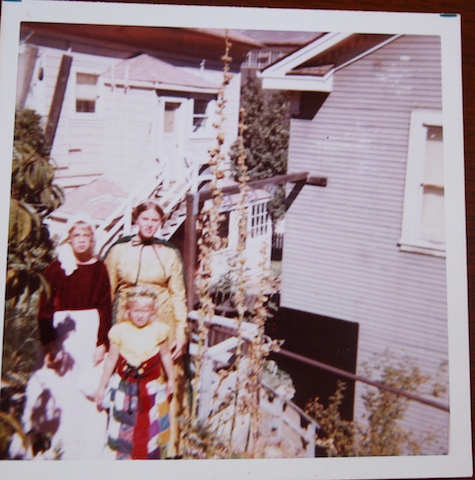
As I saw it, we had all the inconveniences of Victorian life and none of its perks: No bonnets or sidesaddles. No French governess or wicker pony trap. No engraved calling cards, comforting nursery routines or conventional parents who stayed married ‘til death do they part.
To escape the dissonance, I hid in old books, reading and re-reading The Bronte sisters, Laura Ingalls Wilder and Louisa May Alcott. My feet dragged to school past the metal silos of the C & H Sugar Refinery. But my mind roamed freely across Yorkshire moors, Midwestern prairies or New England villages.
Having a genuine Edwardian grandmother supported my fancies. Born in the Big Valley in 1898, Grandma told vivid stories of “the olden days.”
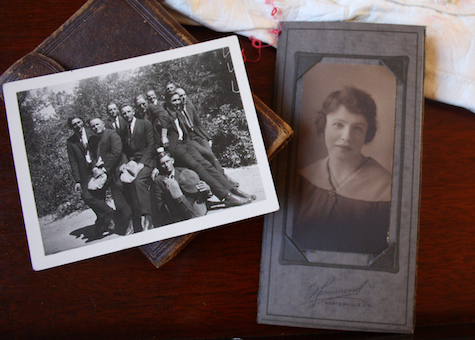
She passed on exciting antique-y relics. Like her tatting shuttle…
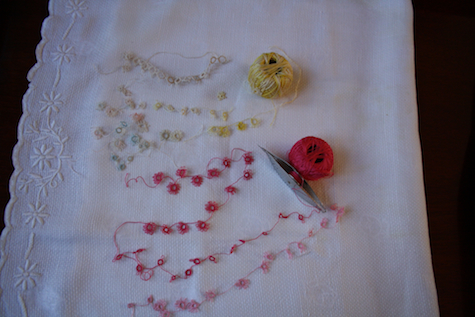
Tintypes of her father and grandmother…
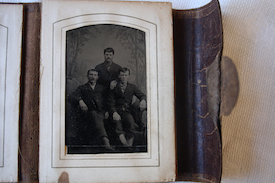
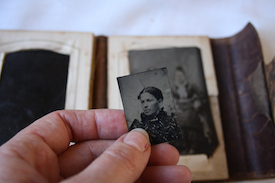
And white gloves that squeezed my hand into elegant, Edith Wharton-ish thinness…
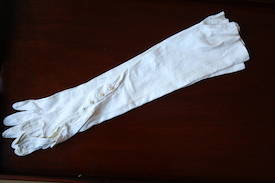
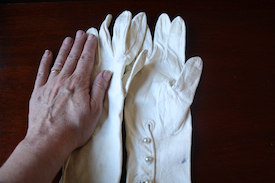
In the kitchen with Louisa May Alcott, my soul sister
But it wasn’t by reading or collecting tchotchkes that Victorian life became most real for me. It was through cooking. Stirring a blanc mange from an antique “receipt,” I felt hurdled back in time to Civil War Concord, MA, where I settled in to eavesdrop on the March family.
I felt so at home with Louisa May Alcott. Part of the draw was LMA’s real-life, weird parents: The Alcotts’ Transcendentalist friends, communal farm and all-apple vegetarianism almost made my parents look normal.
My attachment to LMA extended to her home turf, New England, and its foods. Like Boston brown bread.
By happy chance, in the 1970s, the El Cerrito Co-op—the alternative supermarket where mom shopped—sold a number of culinary oddities, including Boston brown bread packaged in a coffee can-shaped tin.
The Co-op must’ve also carried rye flour, a key ingredient in brown bread. Because I remember making the bread, probably from a circa 1970 Time-Life International Foods Cooking of New England Cookbook recipe.
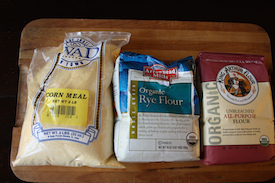
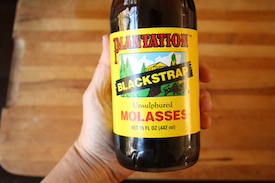
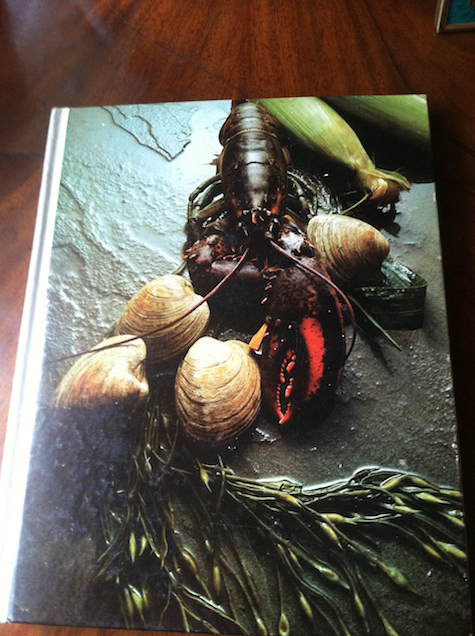
I spooned the runny, raisin-studded batter into a Folgers coffee can and steamed it for two hours. Thrillingly, the bread slid out of the can looking exactly like the store-bought version.
Though nostalgia was more important than, you know, the recipe’s actual taste, my Boston brown bread was delicious. The moist slices had a flavor and mouth-feel like nothing I’d ever eaten. Sweet with the burnt-sugar taste of molasses, the bread’s warm rounds made a perfect sponge for the melting slabs of butter I laid on them.
I don’t know why it’s taken me so long to revisit Boston brown bread. But this winter, I found myself craving it badly. The soft, steamed bread seemed the perfect accompaniment to winter soups and afternoon tea. (It is.)
Plus Boston brown bread is sugar-free and whole grain. And if you substitute almond milk, you can even make a vegan version. I think LMA would approve.
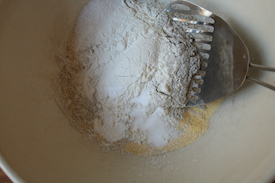
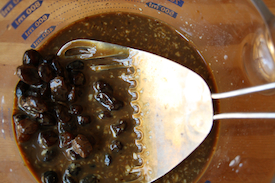
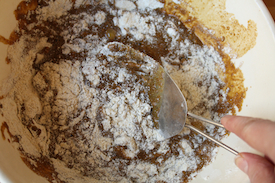
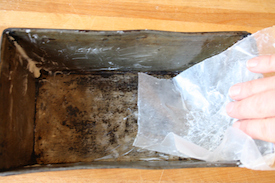
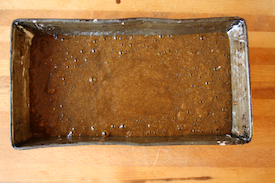
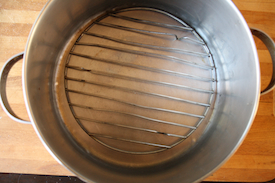
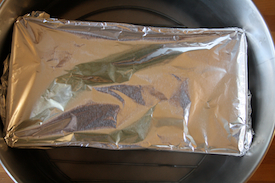
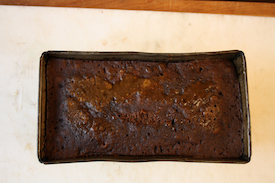
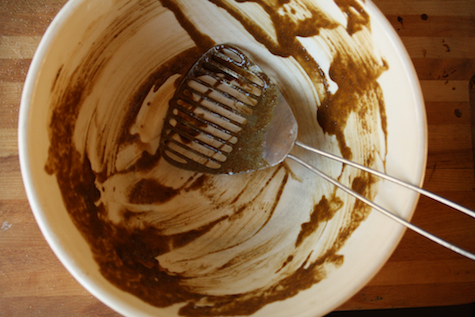
Easy Boston Brown Bread Recipe
Butter or oil to grease coffee can or loaf pan and foil
1/2 cup rye flour
1/2 cup cornmeal
1/2 cup whole wheat flour (or barley, oat or other whole grain flour)
1/2 teaspoon baking soda
1/2 teaspoon baking powder
1/2 teaspoon salt
1 cup butter milk or milk soured with a teaspoon of vinegar—or try almond milk for a vegan version
1/2 cup blackstrap molasses
1/2 cup raisins
Boiling water
- As mentioned, a coffee can is traditional for Boston Brown Bread. Unfortunately, the Trader Joe’s Italian Roast I buy comes in a cardboard container so I use a bread pan. Generously grease whatever you use–the can or loaf pan–with butter. Grease a piece of foil to cover the can or pan.
- In a large pot with a lid, place a small rack or empty, rinsed tuna can. (You’ll place the batter-filled coffee can or loaf pan on top of the rack or tuna can to steam.)
- In a medium bowl mix dry ingredients, blending well with a whisk.
- In another medium bowl or a large measuring cup, mix milk, molasses and raisins, stirring to completely blend molasses into milk.
- Dump the milk mixture into the dry ingredients, blending with a few swift strokes. The dough will be runny—more like a batter.
- Pour the batter into the greased can or pan. Cover tightly with greased foil.
- Place pan on the rack/tuna can in the pot. Pour boiling water into the pot until it reaches halfway up the side of the bread pan or coffee can. Cover the pot, bring the water to a boil then lower flame and simmer the bread for two hours, adding more boiling water as needed.
- Using a hot pad, remove pan from pot. Let the bread cool for 5-10 minutes. Remove foil from pan—be careful: the bread’s steam can burn your hand. Run a knife around sides of pan to loosen the bread and invert the bread onto a rack. Serve bread immediately with butter or cream cheese.
To reheat leftover bread, wrap in foil and place in 30-degree oven for 15 minutes. Or nuke individual slices in your microwave for a few seconds. Steamed Boston Brown Bread is one of the few foods that benefits from microwave heating.
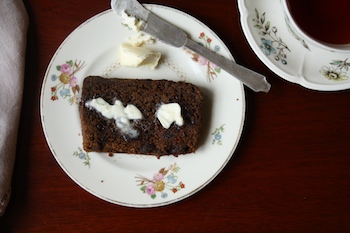


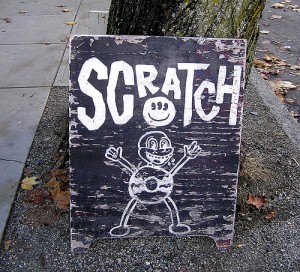
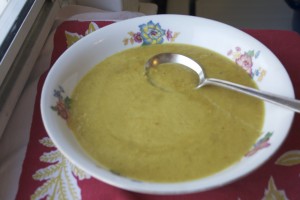
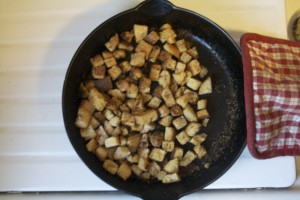
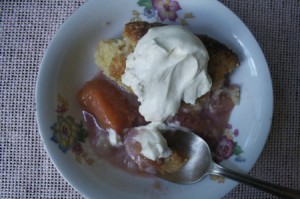
First I enjoyed reading your story. secondly,growing up in Maine I had brown bread alot . Coming h0me from school and the aroma filled the house, you knew that after dinner you would be enjoying a slice of heaven. warm from the can,lightly buttered piece of delight. Thank you for sharing the recipe and a look in to your past. I cannot wait till tomorrow to make some bread for myself and reminisce about my own childhood. 🙂